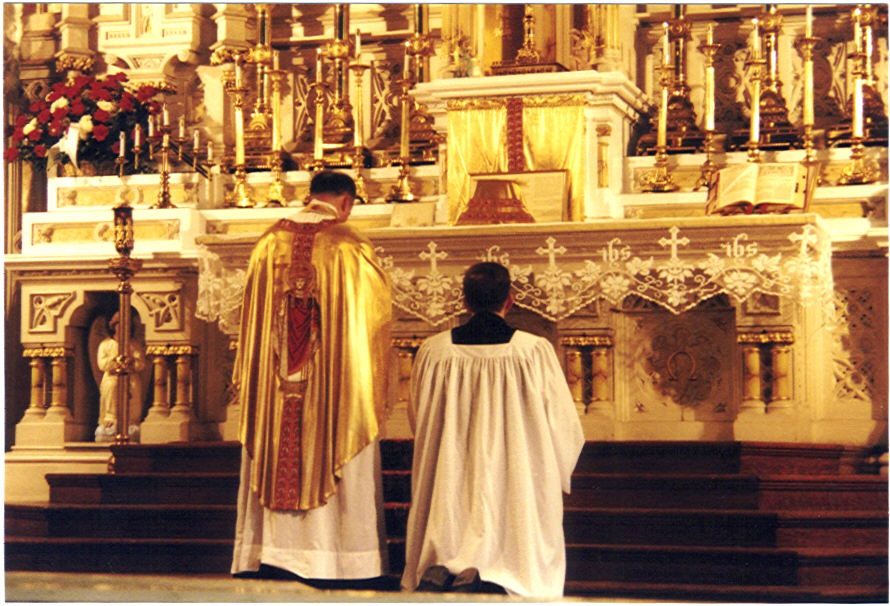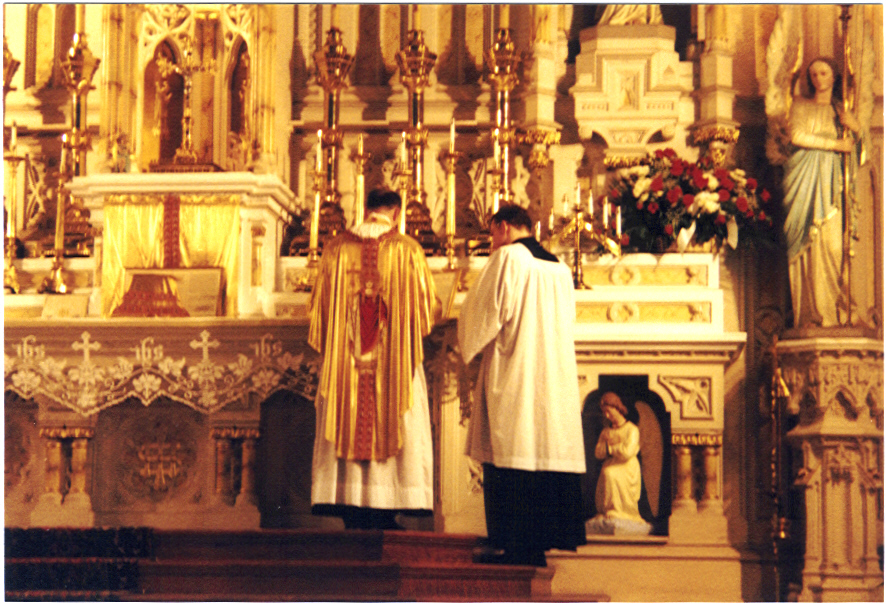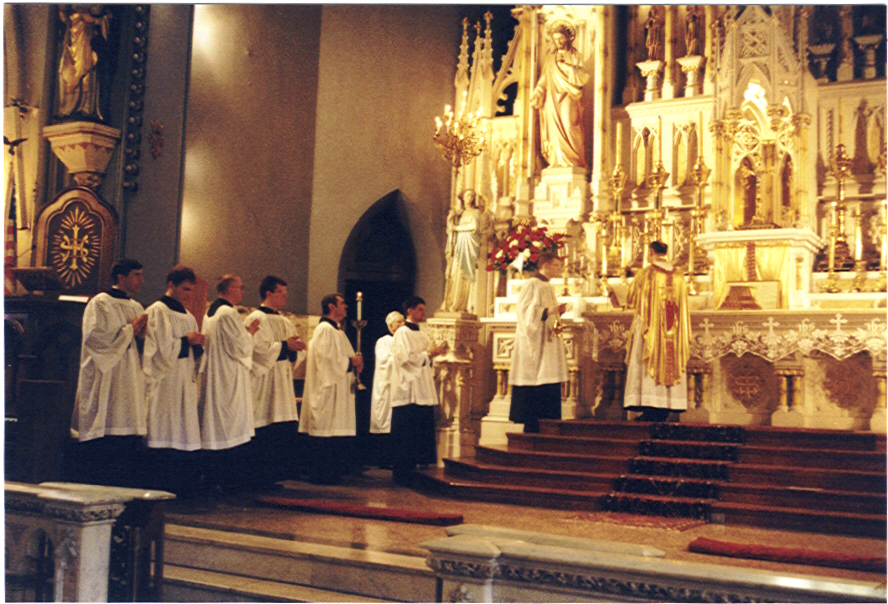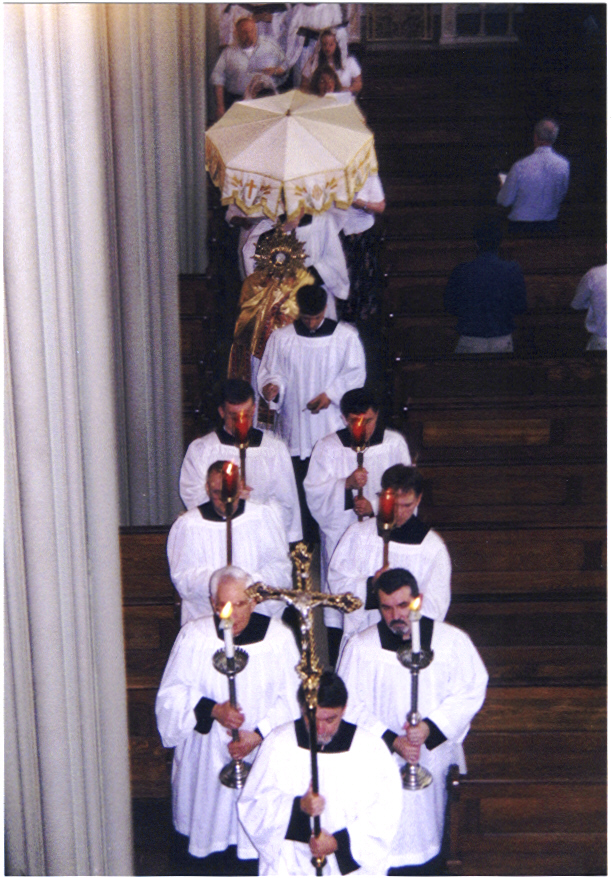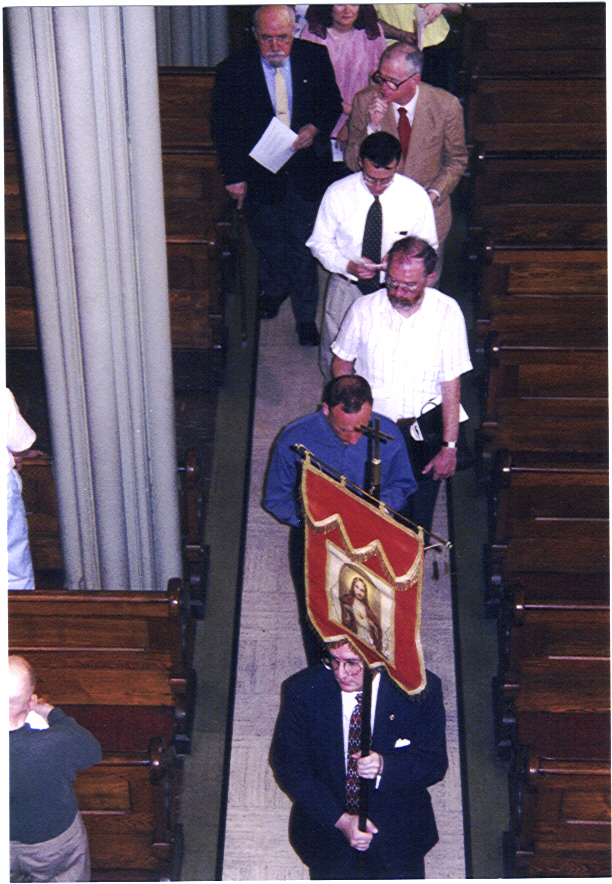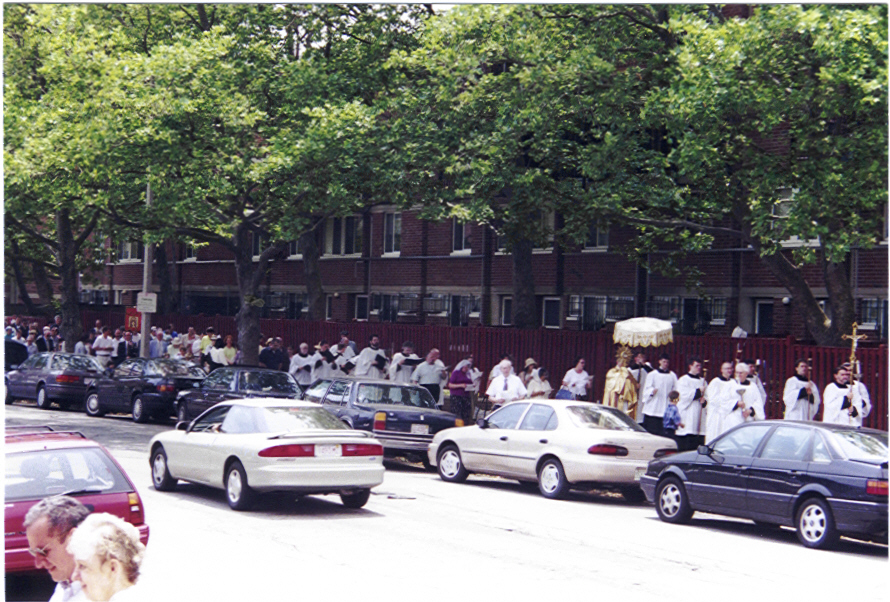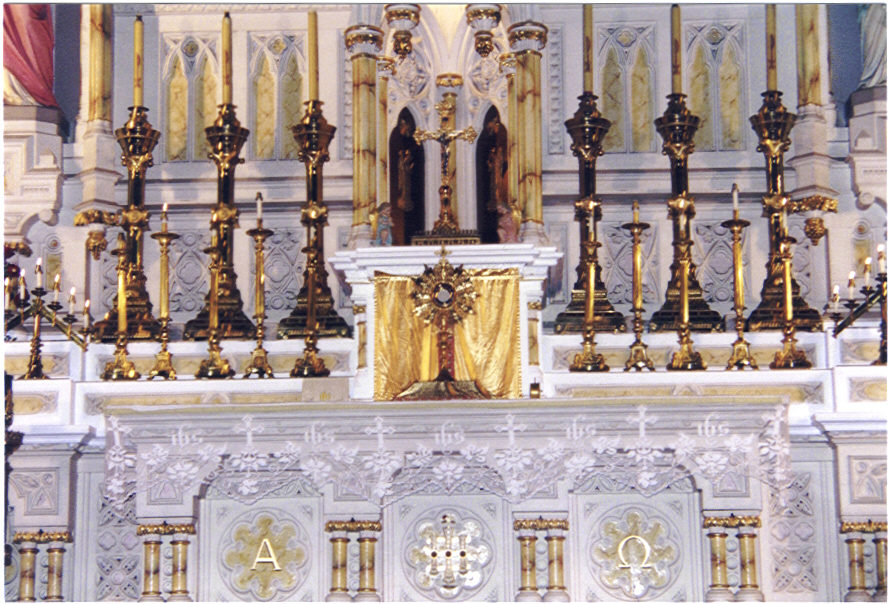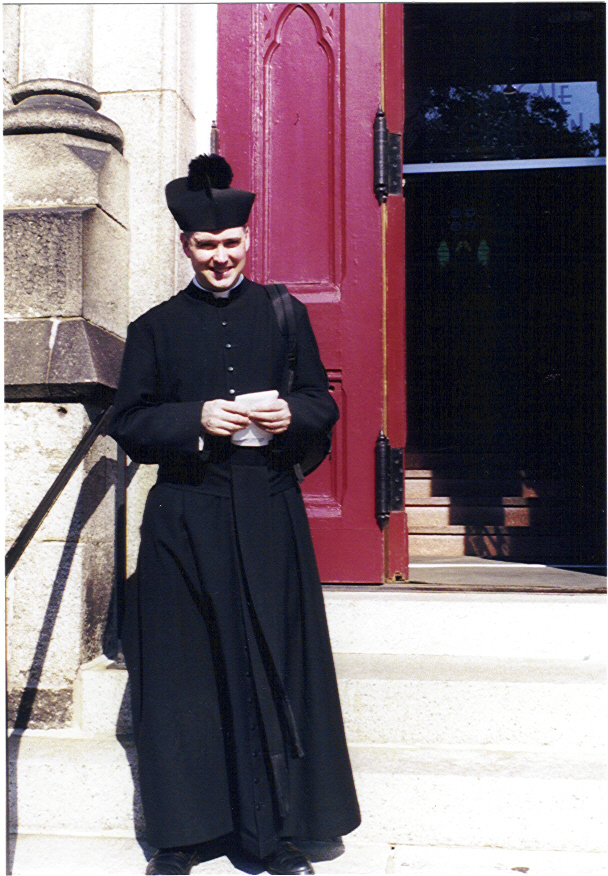Article reproduced from here.
Even before its universal promotion in 1314, Corpus Christi was one of the grandest feasts of the Roman rite. By request of Pope Urban IV, the hymns, Mass propers, and divine office were composed by St. Thomas Aquinas (d. 1274), whose teaching on the Real Presence was so profound that the figure of Jesus Christ once descended from a crucifix and declared to him, “Thou hast written well of me, Thomas.” The mastery with which Aquinas weaves together the scriptural, poetic, and theological texts of this feast amply corroborates this conclusion.
Though Maundy Thursday is in a sense the primary feast of the Blessed Sacrament, Corpus Christi allows the faithful to specially reflect on and give thanks for the Eucharist. Hence there arose a number of observances centered on Eucharistic adoration. The most conspicuous of these is the Corpus Christi procession, for which Holy Mother the Church grants a plenary indulgence to all those who take part in it.
This public profession of the Catholic teaching on the Real Presence in the Blessed Sacrament, which was solemnly encouraged by the Council of Trent, is traditionally accompanied by ornate pageantry. One of the most popular processional customs is having children dress as angels to represent the heavenly hosts who ever adore the Panis Angelicus. So too is having the various parish groups march together in a body. (Both of these customs are mentioned, significantly enough, in an eyewitness account of Holy Trinity German Church’s elaborate Corpus Christi procession of 1851 (A Way of Life, p. 49)).
Another part of the Roman tradition is the recitation of the Divine Office. Required for the clergy and encouraged for the laity, the “liturgical hours” are part of the Church’s way of sanctifying time. Of these hours, Solemn Vespers of Sundays and Feast days are a well-known feature of Catholic piety, so much so that in Europe the Sunday dinner was in some places called the “Vesper meal.” With its heart felt prayer and symbolic use of incense, Solemn Vespers offers the “evening sacrifice” of Psalm 140.2.
To piously and joyously pay tribute to the Feast of Corpus Christi, the Traditional Latin Mass community at Holy Trinity German Church celebrated a High Mass, which was followed by Benediction, a procession of the Blessed Sacrament through the streets of Boston’s South-end, the recitation of the Divine Office in Latin including None, Sext, and Vespers, and ended with Benediction. Pictures are below.
